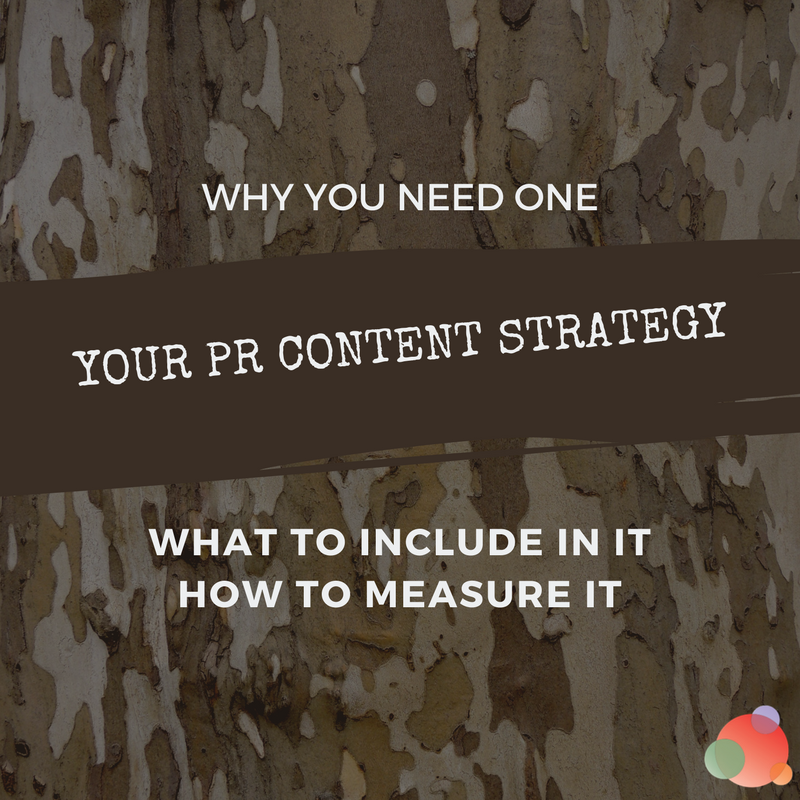 Too often, public relations work ends up being reactive.
Too often, public relations work ends up being reactive.
PR pros race from one fire drill to the next, completing executive to-dos that trickle in via email and texts at all hours.
(I want one million Facebook fans! Send a news release about our new hire tomorrow. Why hasn’t the New York Times responded to you yet? I saw competitor A in a story. Why weren’t we included?)
It’s no wonder the PR executive job just turned up as one of the most stressful.
One area that’s especially hit hard by the seat-of-the-pants approach is a PR content strategy.
Without a unifying strategy, each piece of content—news releases, customer testimonials, contributed content, blog posts, media profiles—lives and dies on its own individual merits.
But it could do so much more!
The Benefits of a PR Content Strategy
You wouldn’t set your executive team up for a media tour without having updated messaging and talking points, would you?
But when you’re creating one-off pieces of content, without an overarching PR content strategy, you’re missing out on the power of having all your communications efforts support one another—and your business objectives.
When your company blog posts show your executives’ subject matter expertise and align with the contributed content they’re publishing, and the stories you’re pitching to the media, you’re in the flow.
Each win supports the next pitch.
That’s the power of a PR content strategy that looks at your activities holistically.
What to Include in Your PR Content Strategy
If you haven’t documented your PR content strategy because you don’t feel you have enough time or resources to do so, I call shenanigans!
Your PR strategy can fit on a page.
In fact, you’re more likely to use it as a resource to drive action if you keep it brief and to the point.
It is a documented plan that identifies what content you’re creating, for which audience, to meet which objectives, and with what projected results.
It becomes your road map for planning all of your content throughout the year.
That way, the individual pieces support each other and the business goals.
Your PR content strategy should define the following:
- Your audience persona. Who are you trying to reach with your PR activities? This should include your ideal customer plus others in their organization who influence purchase decisions.
- SMARTER goals. What are the measurable, time-bound goals you need to accomplish through your content and PR activities?
- Metrics. How will you measure your results against your goals? What data can you realistically obtain? What measurements matter to your executive team?
- PESO tactics. The PESO model integrates paid, earned, shared, and owned media in a PR program. Which PESO model tactics will you deploy to reach your goals?
- Resources. Who’s responsible for the PESO activities? Do you need support or resources from other teams in your organization to complete these activities?
How to Measure Your PR Content Results
Of these five elements of a PR content strategy, metrics is where most PR pros get hung up.
After years of reporting on vanity metrics such as media impressions and advertising equivalencies, it can seem intimidating to identify and implement metrics that show how your PR activities are having a direct effect on your business results.
Use these six metrics to measure the real business results of your PR efforts:
- Domain authority. You can find your website’s domain authority using the Moz SEO toolbar. This number represents how respected your website is as a source of useful information. Benchmark where this number is at today, then track it over time. As your owned content is shared, and your media relations drives traffic back to your website, you’ll show how your activities caused it to increase.
- Keywords. What are the top five to 10 keywords someone looking to purchase your product or services is looking for through online search? Are you ranking on page one of search results for those priority keywords? Document where you are today, and track over time how reinforcing these keywords in your PESO-driven PR content activities changes your search visibility.
- Website visitors. In addition to using Google Analytics, create unique URLs to track the traffic your PR efforts drive to your website.
- Email addresses. Drive those website visitors to a lead magnet. That could be an eBook, white paper, or template, or even a newsletter subscription form. By doing this, you can begin to obtain email addresses for lead nurturing.
- Qualified leads. Leads are a good start, but qualified leads are what’s most important. How many of those email addresses were from people who fit the persona of your ideal customer? Make sure you understand your sales team’s lead scoring criteria. Use that to inform your personas and tailor your content.
- Sales conversions. This is the holy grail of showing the ROI of public relations. How many closed sales did you drive through your PR activities?
The Fire Drills Will Become Simmers
A PR content strategy won’t be able to prevent you from having to respond to organizational fire drills.
But it will help you respond in a consistent manner.
(And it sure is a lot easier to say, “That’s not in the plan and won’t help us achieve XYZ goal. I’m happy to do it, but what would you like me to shift to do so?” Almost always, the fire drills goes away after that conversation.)
Further, it will help you make all of the content you create as part of your daily efforts work harder and show measurable results.
A version of this first appeared in Brand Quarterly